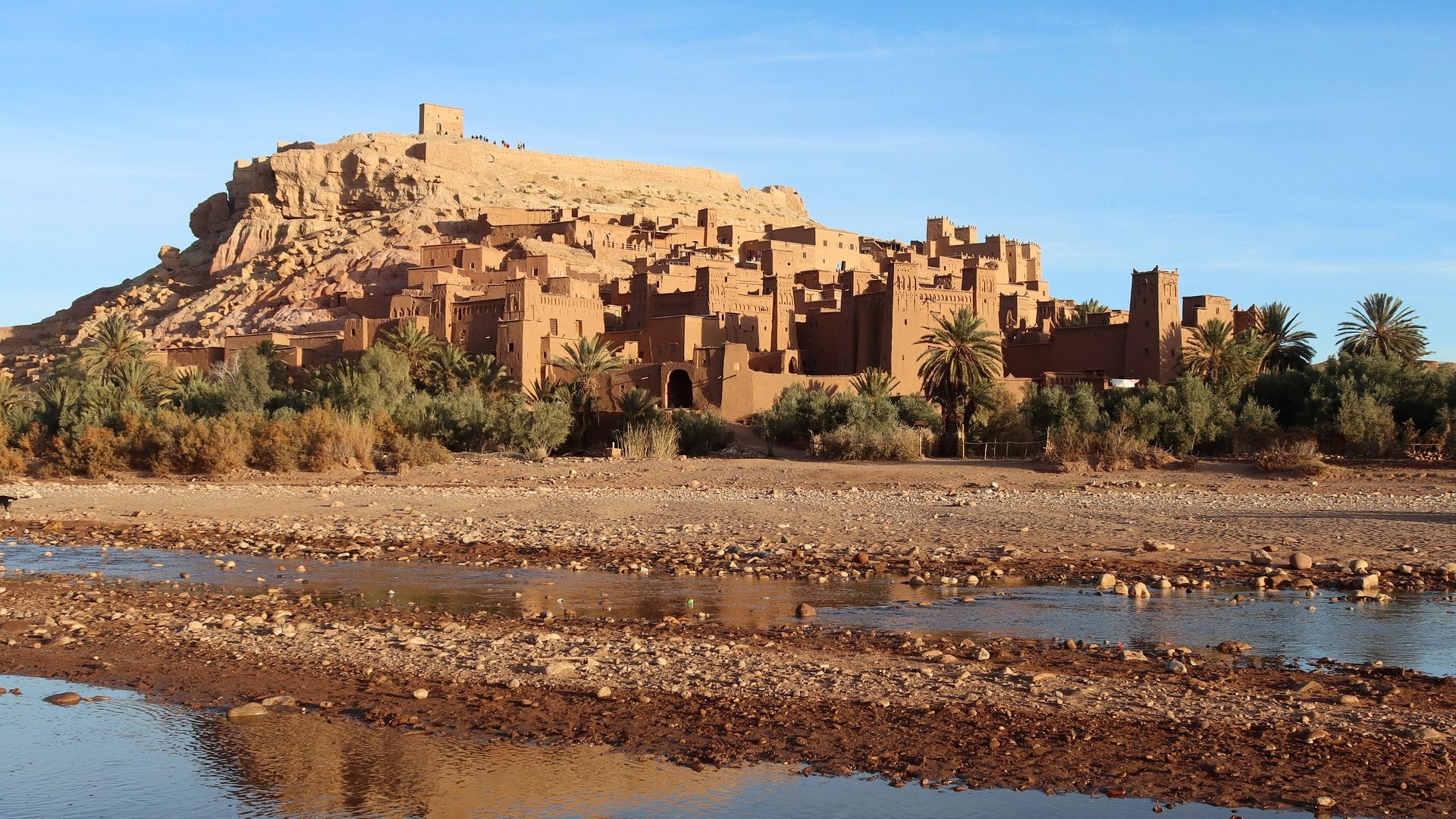
Nestled along the ancient trade route between the Sahara and Marrakech lies Aït Ben Haddou, a spectacular fortified village (ksar) that rises from the Ounila Valley like a mirage from a storybook. A UNESCO World Heritage Site since 1987, this earthen marvel continues to enchant travelers with its timeless charm, cinematic fame, and rich cultural legacy, now more than ever, as 2024 marks a turning point in its restoration, cultural revival, and sustainable tourism efforts.
The origins of Aït Ben Haddou date back to the 11th century, when it served as a critical stop for trans-Saharan caravans carrying gold, salt, and slaves. Built using traditional pisé (rammed earth) architecture, the ksar is a collection of tightly packed kasbahs (fortified homes) surrounded by defensive walls and watchtowers. It is believed to have been established by Ben Haddou, a local leader whose tomb lies across the river and is still revered by villagers.
Once home to dozens of families, the ksar was a bustling hub of Amazigh (Berber) trade and culture. Over time, as modern infrastructure developed, many families relocated to newer houses across the river, but a few families still reside within the historic walls, preserving ancestral homes and customs.
Today, only around five to ten families still live within the ksar itself. Most residents now live in the modern village of Aït Ben Haddou, across the bridge. Yet, those who remain in the ksar are more than caretakers, they are artisans, storytellers, guides, and cultural guardians. Many have transformed their homes into boutique riads, craft shops, or artist studios, offering visitors an authentic glimpse into Amazigh life.
Despite reduced residency, the ksar is far from a relic, it’s a living heritage site, animated by festivals, traditional music, and artisanal activity.
One of the most exciting developments is the Izouran Festival, returning from October 18–21, 2024. “Izouran” means “roots” in Tamazight, and the festival is a celebration of Amazigh oral heritage, especially that of women’s traditional jewelry, clothing, and poetry.
Organized by the We Speak Citizen collective and Maison de l’Oralité, the event includes exhibitions, music, workshops, and performances that breathe new life into ancestral traditions. It’s a perfect time to visit for those seeking a cultural deep dive.
One of the reasons Aït Ben Haddou is globally recognized is its cinematic legacy. Its ancient architecture and dramatic desert backdrop have featured in more than 20 iconic films and series:
Gladiator (2000)
The Mummy (1999)
Kingdom of Heaven (2005)
Game of Thrones – as Yunkai, one of the cities Daenerys Targaryen liberated
Visitors often reenact scenes or take guided “film tours” highlighting specific filming locations. Many guides are former extras or crew members themselves.
Walk the labyrinth of narrow alleys, admire the intricate earthen façades, and climb to the top of the granary for panoramic views of the Ounila Valley.
Visit family-owned shops offering handwoven carpets, ceramics, and desert jewelry. Many artisans are happy to explain the symbolism and techniques behind their crafts.
Explore the valley on foot or by camel, crossing the dried riverbed or following the old caravan routes into the nearby mountains.
Book a stay in a traditional kasbah-style riad. Sunset over the ksar is magical, and mornings are filled with birdsong and the scent of mint tea.
Try tagine cooked over firewood, couscous with dates, and berber pizza (madfouna) — all served with warm hospitality in village cafés or family kitchens.
Aït Ben Haddou is pioneering eco-conscious tourism in Morocco. Here’s how you can visit responsibly:
Choose eco-certified accommodations and local guides.
Refrain from climbing on fragile ruins.
Bring reusable bottles — water is scarce here.
Avoid single-use plastics and respect local customs.
Buy crafts directly from local artisans — not mass-produced souvenirs.
These steps not only protect the village but empower its people.
From Marrakech: ~3.5 hours by car or shared taxi via the Tizi n’Tichka Pass.
From Ouarzazate: Only 30 minutes by car.
Best Time to Visit: Spring (March–May) and Autumn (September–November) for mild weather and festivals.
Aït Ben Haddou is more than a photo stop — it’s a portal to Morocco’s past and a beacon of its cultural future. Whether you’re tracing the steps of ancient traders, movie stars, or modern-day artisans, you’ll leave with more than photos — you’ll leave with stories.
As restoration and revitalization continue in 2024, visiting this majestic ksar isn’t just tourism — it’s participation in preservation.